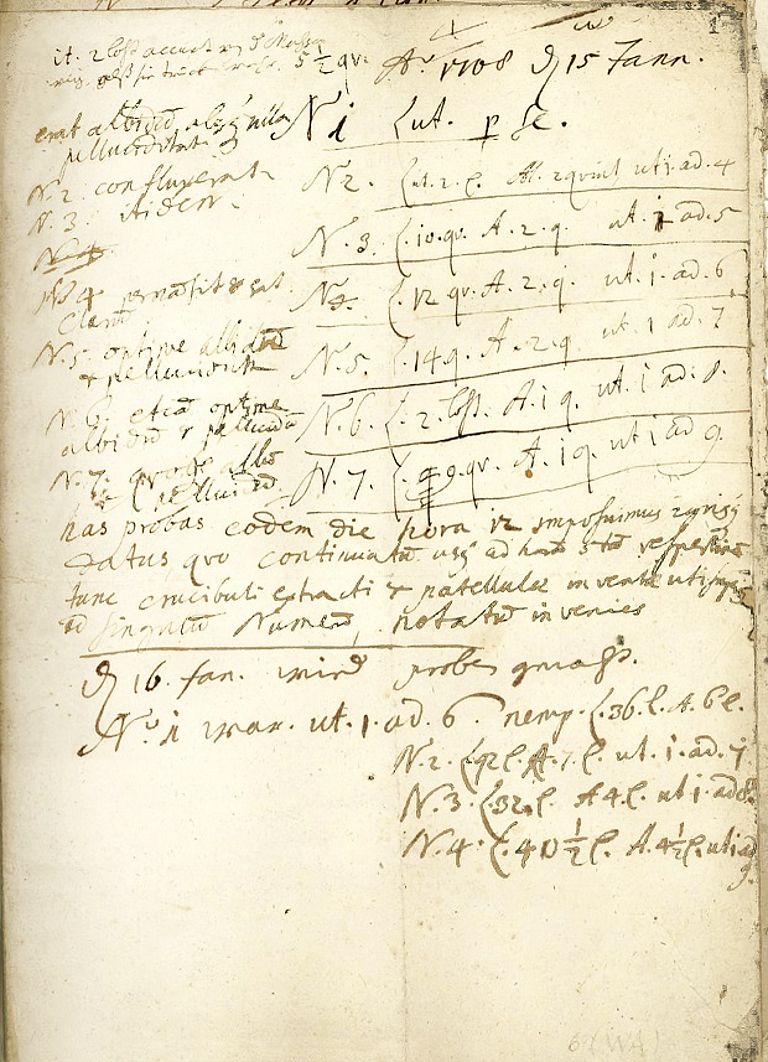Invention
Recipe
Making porcelain is a bit like baking a cake. You need the right “ingredients”, those being kaolin, feldspar and quartz. You would have to be pretty brilliant in quite a few disciplines to hit upon the “recipe” for making porcelain:
1. Maths: Being a wizard with numbers is important when it comes to deciding how much of each material to use.
2. Physics: What changes do materials go through at high temperatures? At what temperatures do the various raw materials melt? How can sufficiently high temperatures be reached?
3. Chemistry: How do different substances interact? What affect do various materials have on the density, colour or odour of the finished product?
4. Smelting: Which raw materials are readily available in Saxony or how do you design an oven for baking porcelain, a device known as a “kiln”?
Johann Friedrich Böttger
Johann Friedrich Böttger is credited with having invented porcelain. Indeed, there is a bust of him on the other side of the road running past the present Porcelain Manufactory. But he didn’t actually invent it all on his own. So interested was he in nature and science that, in 1696, he became a chemist’s apprentice. He was particularly fond of alchemy and wanted to create gold. Böttger’s experiments were closely followed by the nobles of his age, people who led very expensive lives. The Brandenburg Elector Frederick III tried to imprison Böttger, who nevertheless managed to escape to Saxony, where he was eventually arrested and taken to Dresden. He continued his experiments on the orders of Augustus the Strong. He attempted to flee several times, but in vain. He was urged by Walther von Tschirnhaus to start experimenting on how to make porcelain. He succeeded in inventing red fine stoneware in 1707 and went one better in 1708 by cracking the secret of “white gold” as Meissen Porcelain is often called. Augustus the Strong set up the first European porcelain manufactory at Albrechtsburg Castle in 1710. Böttger died in 1719 at the early age of 37, having spent several years labouring away under conditions of extreme heat and constant exposure to chemical fumes.
Ehrenfried Walther von Tschirnhaus
Ehrenfried Walther von Tschirnhaus was a mathematician and physicist. He manufactured glass, for instance, and conducted research into and developed new ceramic materials. Along with Pabst von Ohain, he began overseeing Böttger’s experiments to create gold in 1704, but in 1706 argued that he should commence tests to make porcelain. Tschirnhaus’s wide-ranging knowledge of physics, mathematics and firing technology, combined with Böttger’s love of experimentation, led to their formulating a successful means of producing porcelain together. Ehrenfried Walther von Tschirnhaus died of dysentery in 1708 before the formula was documented. He did not live to witness the Porcelain Manufactory being established and Meissen Porcelain becoming famous.
Gottfried Pabst von Ohain
Gottfried Pabst von Ohain studied Law, Mathematics, Physics, “Assaying”, Architecture and Drawing. He gathered experience in smelting on his travels through Europe and in 1701 was ordered to Dresden by the Saxon Elector to assess Böttger’s failed attempts to create gold. An alchemistic laboratory was installed in Dresden in which, under Ohain’s supervision, Böttger joined with smelting staff from Freiberg to carry out more extensive trials than hitherto on how to succeed in making porcelain.
Ohain was instrumental in improving kiln technology, a crucial achievement given that the kilns in which porcelain is fired have to function dependably, be long-lived, generate higher-than-usual temperatures and facilitate steady, controllable firing.
Freiberg mining and smelting staff
It was crucial when inventing and subsequently manufacturing porcelain to have access to ingredients that gave rise to an almost transparent, pure white material; the raw materials used needed to be available in sufficient quantities, so as to avoid having to buy them in from other regions or countries.
Such expertise concerning the availability and procurement of raw materials was less the domain of the aforementioned researchers and polymaths than of excellently trained Saxon miners from the Freiberg region. The mining tradition in Saxony stretches right back to the 12th century: “Logically enough, knowledge about mineable minerals had primarily emerged in countries with mining and smelting sectors, foremost amongst which at that time was the Electorate of Saxony with its ore-rich Meissen Marches.”
(Source: W. Funk: Chemisches und Keramisches aus der Zeit vor der Erfindung des europäischen Porzellans. Reports of the Deutsche Keramische Gesellschaft, 1934. Vol. 15, issue 3, p. 238.)




